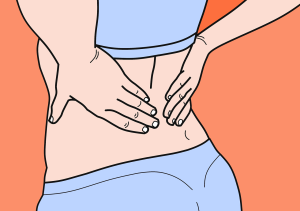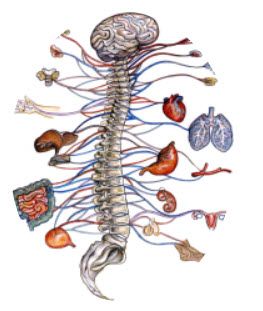How many people suffering, on drugs, facing a life of limitation could be helped by chiropractic care? Probably most of them.
Lower back pain after delivery
A 33-year-old woman presented for chiropractic consultation and care with chronic low back pain. The pain began after a pregnancy approximately three years prior, after she had a C-section.
X-ray analysis showed subluxation/displacement of her pelvis (sacrum). She had two chiropractic care visits. After the first sacral adjustment the next X-ray revealed a 72% correction of the sacral subluxation and she had complete relief of her symptoms. (1)
Bedwetting and ear infections
A 12-year-old girl had years of bedwetting and recurring ear infections (otitis media). Five sets of tubes (tympanostomy) were placed in her ears with no benefit.
Her chiropractic examination revealed subluxations of the upper neck (C2, C4), mid back (T5-8), hips and sacrum.
After two chiropractic adjustments, she woke to use the restroom during the night, which was unusual. After 1½ months and nine adjustments her bedwetting was less frequent. Additionally, she hadn’t had an episode of ear infections in the 1½ years she had been under care. (2)
Hypothyroidism
A 49-year-old man with neck, back and shoulder pain began chiropractic care. Three years earlier his MD diagnosed him with hypothyroidism and prescribed Synthroid®.
His spine was analyzed and adjusted using chiropractic techniques and although there were no changes in his lifestyle, diet or exercise levels his blood tests revealed his thyroid TSH blood levels returned to normal range. His need for synthetic thyroid hormone decreased. His cervical curve additionally improved and his neck, back and shoulder pain resolved. (3)
- Hoying M, Alcantara J. Improved health outcomes in a woman experiencing chronic post-partum low back pain. Journal of Pediatric, Maternal & Family Health – Chiropractic. 2017;3:128-132.
- Marko S, Marko J. Resolution of otitis media and nocturnal enuresis in a 12-year-old patient following chiropractic care to reduce vertebral subluxations: a case study and selected review of the literature. Journal of Pediatric, Maternal & Family Health – Chiropractic. April 2, 2018:13-25.
- Fuller D, Douts B. Improved thyroid function following chiropractic care to reduce vertebral subluxation: a case study & review of the literature. Annals of Vertebral Subluxation Research. March 19, 2018:57-67.

